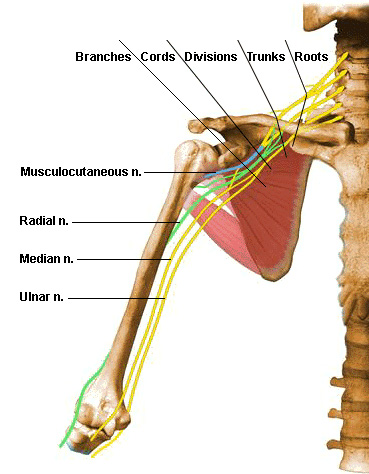As you will know, I have done a fair bit of research into avoiding nerve injury. The main problem is the differing sensitivities and nerve paths between people. The medical diagrams are a guide, not a definitive representation of how everyone is. We all have different shapes and proportions, which, of course, is determined by what lies under the skin. Some people’s nerves are well-protected and this does not seem to simply relate to body tone, muscle or fat. It is a fact that some people will be extremely resilient, others will suffer nerve compression just from sleeping the wrong way or remaining in certain positions. Don’t be lulled into a false sense of security by what you see top pro-bondage models doing as they will be fit, weigh around 100lbs and almost certainly be virtually bomb-proof or, at least, know their bodies well enough to know what works for them . Of course, they will also be experienced enough to recognise any warning signs, however slight. In other words, don’t think just because you own a motorbike, you can emulate the Red Bull X-Fighter extreme MX boys! A lot of what you see is pushing safety to its limits by people who really know their stuff and, even then, injuries are an ever-present risk.
I have developed an experimental test which could help identify sensitivity of the upper arm on the side that faces the torso in the normal standing position. As the area in question is the brachial plexus, which is where the median, ulnar and radial come together, clearly all these nerves could be at risk and thus deserve mention. However, the most common bondage injury seems to be radial nerve and is the symptom which the test induces in me. Of course, the radial nerve can also be damaged elsewhere, e.g. lower third of upper arm. There is no doubt that avoiding rope bulk in the armpit area is good advice. Kazami Ranki, for example, warns against using his characteristic cross in the cinches or dropping the upper cinches entirely where such sensitivity exists
 Diagrams, dissections and 3-D models, however good, only show one example of the nerves’s locations which might not represent you or your partner. This test might not work for you or might identify sensitivities other than the radial. When I perform this test on myself, I experience sensations in my thumb and forefinger which indicate pressure on the radial nerve. This leads me to suppose that my radial could be quite susceptible to injury in this area. It is quite possible that you have enough fat or muscle to protect the nerves or that the path of your nerves creates a vulnerability regardless. All these things are individual, everyone is different.
Diagrams, dissections and 3-D models, however good, only show one example of the nerves’s locations which might not represent you or your partner. This test might not work for you or might identify sensitivities other than the radial. When I perform this test on myself, I experience sensations in my thumb and forefinger which indicate pressure on the radial nerve. This leads me to suppose that my radial could be quite susceptible to injury in this area. It is quite possible that you have enough fat or muscle to protect the nerves or that the path of your nerves creates a vulnerability regardless. All these things are individual, everyone is different.
Clearly, nerves and muscles will move according to arm position. For example, compare gote ranging from high hands to dropped hands positions and even a reversed version. It seems reasonable to assume that vulnerabilities will change in each situation.
There follows a clip that I made with Das Falke to explain how to do it. As you will see from the video, it takes surprisingly little to tweak a nerve. Click here to see the video. Let’s have some feedback! I am interested to hear also about negative results and whether these indicate well protected nerves.

